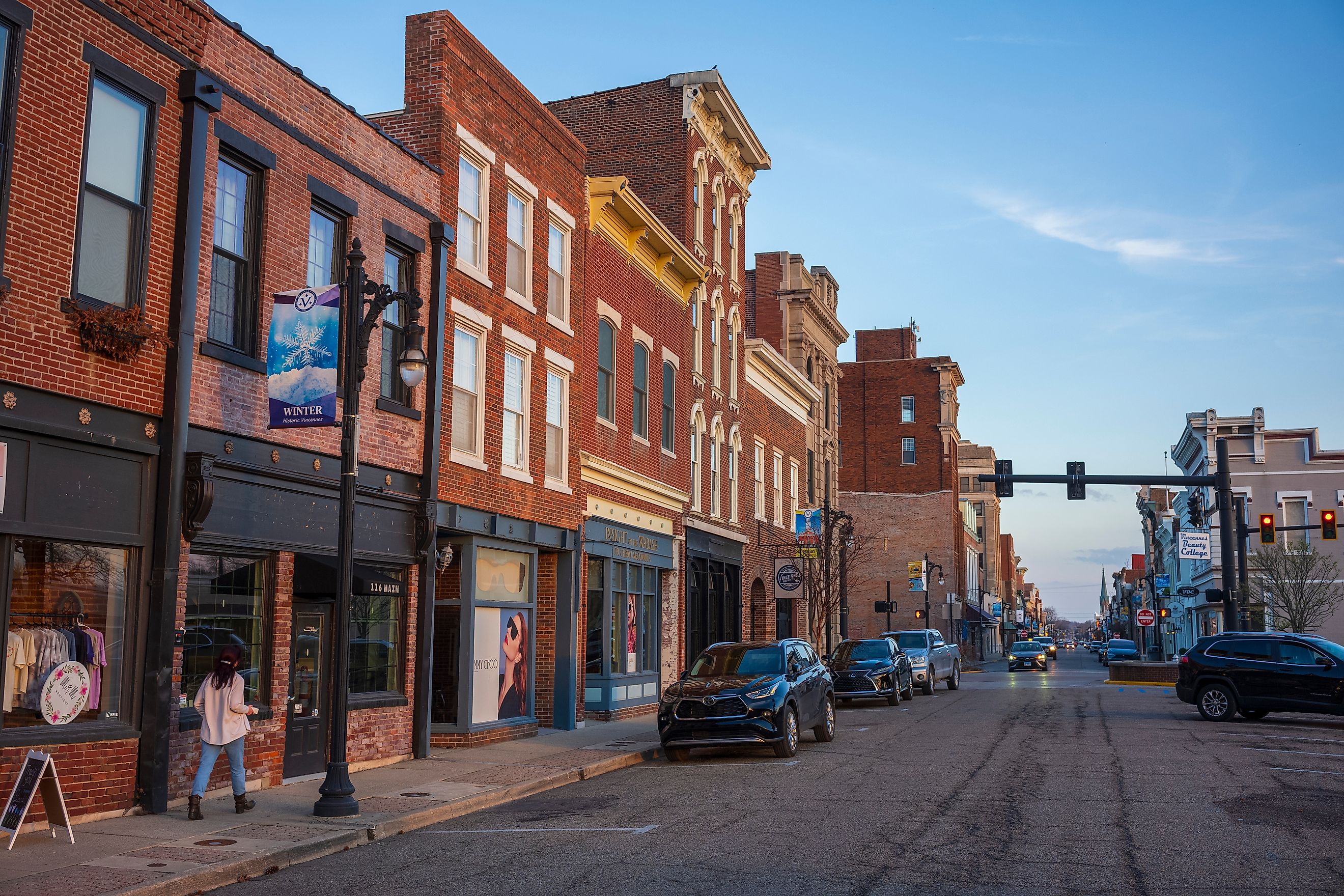
9 Old-World Towns to Visit in Indiana
The Midwest was the first frontier of the American continent, following the settlement on the east coast of the original 13 colonies. Indiana was one of the first states to be settled in the Midwest, and it became the 19th state in 1816. Prior to this date, many settlements had already been set up in Indiana, ranging from French fortifications to utopian communities. Visitors will discover intriguing Civil War graveyards, utopian communities, French architecture, and the original state capital within these old-world towns. They will also be able to follow in the footsteps of famous American explorers like Lewis and Clark. Here are nine old-world Towns in Indiana to explore today.
Clarksville
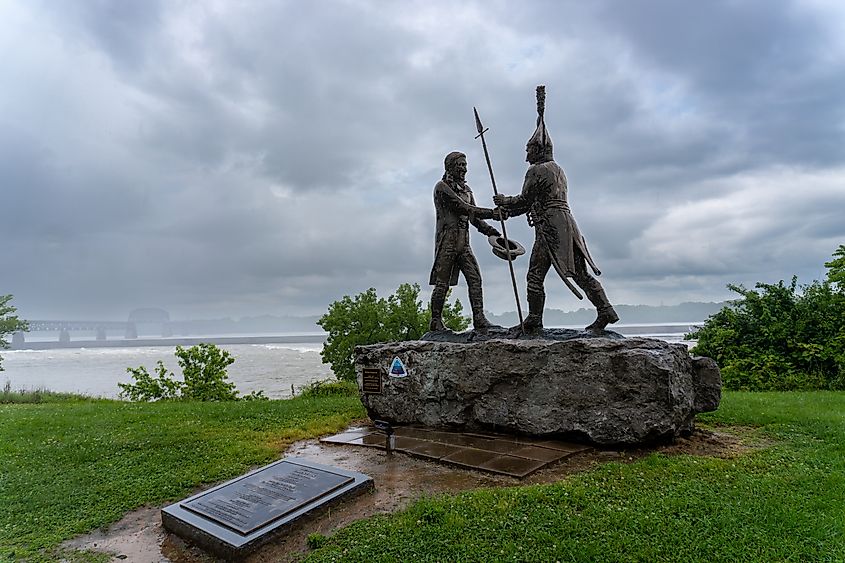
This Ohio River town’s history goes back to 1783 when the Virginia legislature chartered this land for George Rogers Clark and other Revolutionary War veterans who would gradually settle the area. In Clarksville, Meriwether Lewis and William Clark would set out on their expedition to explore the newly purchased Louisiana Territory. Clarksville has a rich natural history that is reflected in the many fossils that flow down the Ohio River Bank. These are on display at the Falls of the Ohio Interpretive Center, along with other historic artifacts. On low tide days, visitors can go fossil hunting in the river bed by the museum. Nearby, visitors can see the site where Lewis and Clark set off on their journey at Lewis and Clark Bicentennial Park. Also in Clarksville is one of the world's largest clocks, the 1924 Colgate Clock, outside the former Colgate-Palmolive factory.
New Harmony
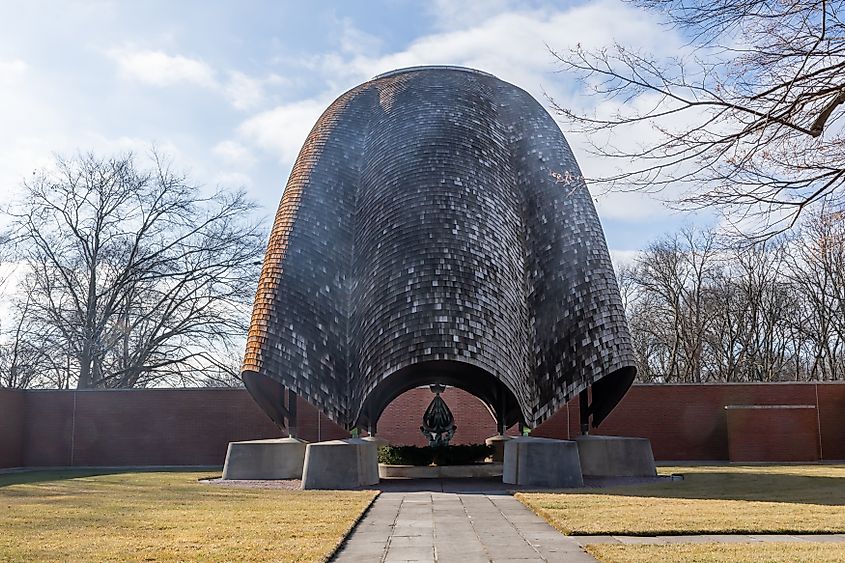
New Harmony was founded in 1814, two years before Indiana became a state by a unique group of people. The Harmony Society purchased the area and built up the town as a utopian Christian community under the leadership of George Rapp. After 10 years, the group sold off the town to Robert Owen, who aimed to create his own social experiment of a town, a socialist utopian center for learning and equality. While neither group may have succeeded in their goals, they certainly left behind a historic place, with many of the original buildings still standing, along with ones inspired by their goals of peace and serenity.
These include the Thrall’s Opera House, which was originally a town dormitory in 1824 before being transformed into an opera house in 1888, and the 1822 Community House #2, where the Harmonists lived together. Two spots that preserve the spirit of New Harmony are the Roofless Church, which includes multiple sacred spaces within a walled-off open-air church, and the Harmonist Labyrinth, a hedge maze created by the Harmonists and reconstructed in 2008 to encourage spiritual reflection.
Jasper
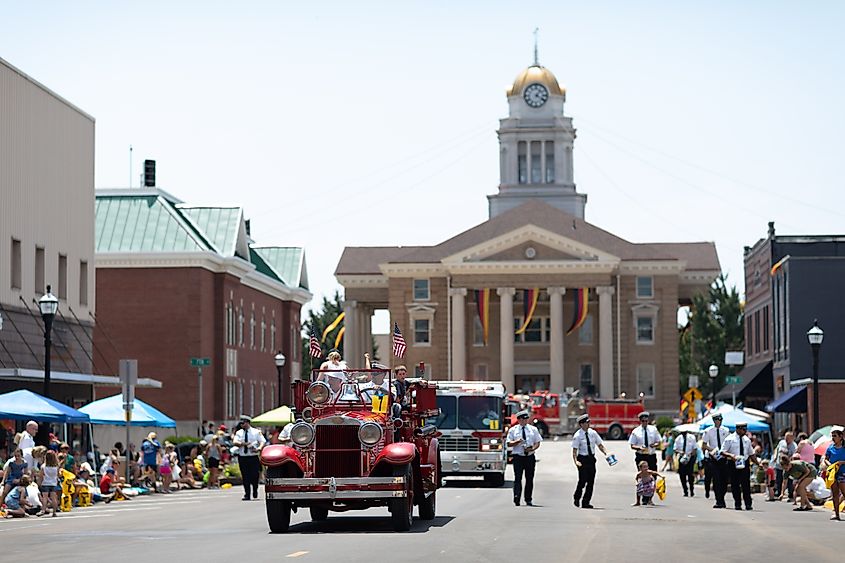
This town earns its name from a biblical reference: that the walls of the New Jerusalem would be adorned with Jasper in Revelation 21:19. Settlers first came to Jasper in the early 1800s, and the town would gain a significant German Catholic presence in the 1830s with the arrival of French and German speaking Priest Joseph Kundek in 1837. This Catholic heritage is present in the St. Joseph Catholic Church, a magnificent structure completed in 1880. Jasper is proud of its history, both in the preservation of historic buildings and museums. For example, the Alexander School House is a 1918 reconstruction of the original 1820 school, one of the first schools in the larger Dubois County. Jasper also houses the Dubois County Museum, the largest county museum in Indiana with more than 56,000 artifacts, including an 1885 two-pen log house.
Madison
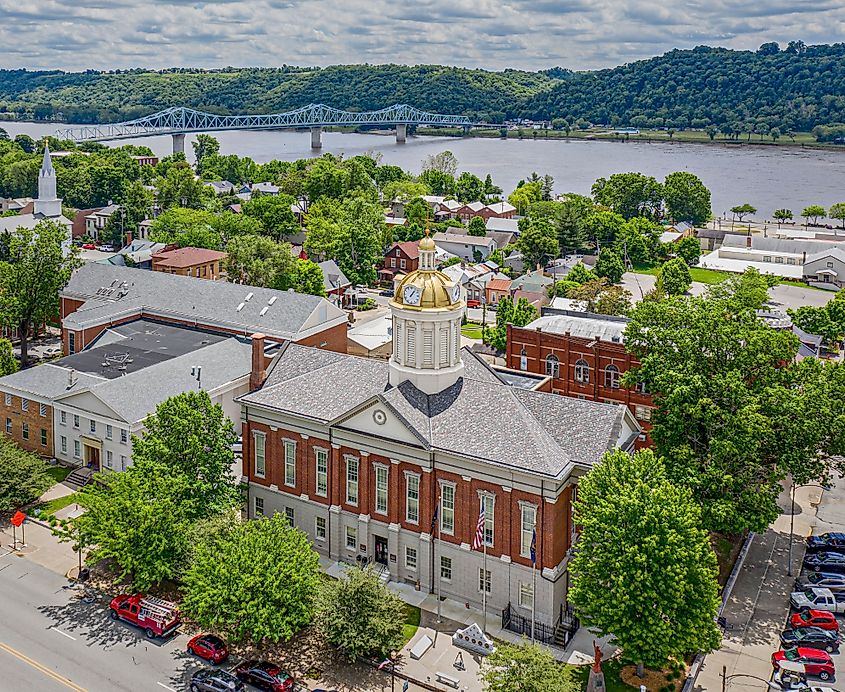
Madison was founded in 1810 on the Ohio River and has a long history of being a center for steamboats. Visitors can see the Historic Eleutherian Colleg, built between 1853 and 1856 as a three-story stone building for this society. Madison has buildings of every variety of 19th-century architectural style, including the 1844 Greek Revival Lanier Mansion State Historic Site, constructed with breathtaking Greek style columns, and the Greek Revival Shrewsbury-Windle House with 12-foot tall doors, spiral staircase, and beautiful stonework. Another intriguing historic spot is Springdale Cemetery, a peaceful place with marble monuments and the burial sites of Civil War veterans who fought significant battles.
Oldenburg
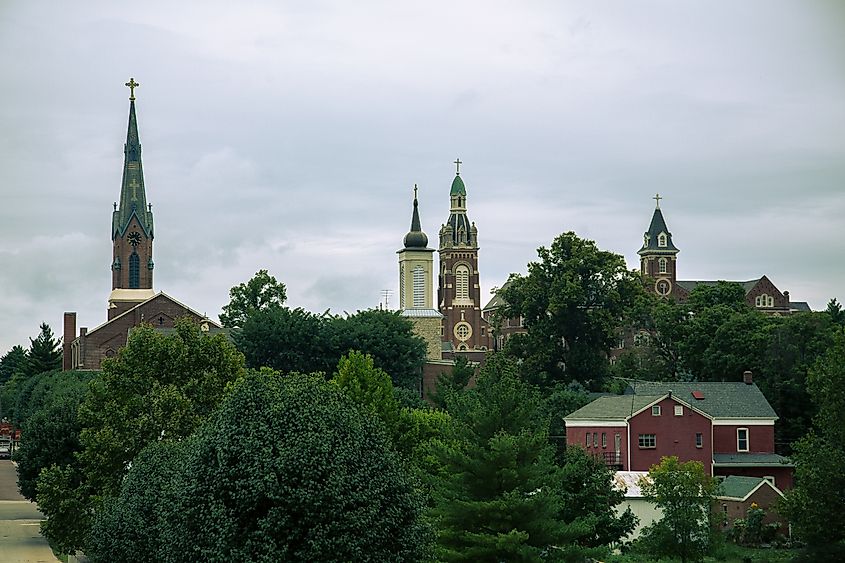
Much like Jasper, Oldenburg has a rich history of German Catholic immigration going back to the early 1800s prior to its official platting in 1837. Oldenburg would become known as the village of spires for the beautiful spires atop its many churches, such as the Immaculate Conception Convent Church, the Holy Family Church, and the Old Stone Church. The stone church was built in 1862 by Father Franz Joseph Rudolph, who encouraged immigration to the town. Much of the area rests inside the Oldenburg Historic District, which includes multiple churches and old German businesses such as the 1850 Fischer Tavern. The town celebrates its German heritage yearly with the Freudenfest from July 18 to 19, which includes games, auctions, German music, and beer.
Troy
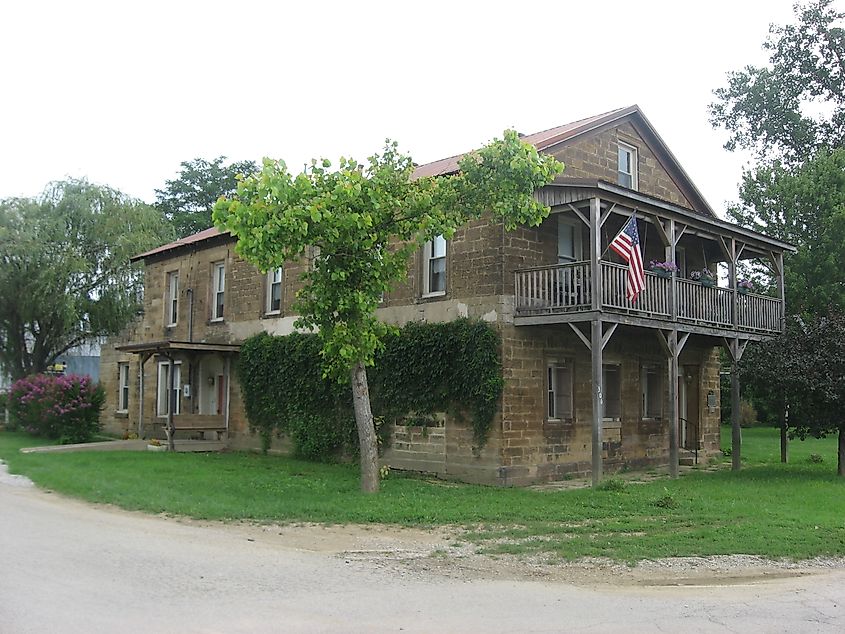
The name Troy itself conjures up images of ancient history. The town itself is ancient by Indiana standards as it was the second oldest town in Indiana, with settlers from Virginia, Kentucky, settling in the area in 1804 due to its position where Anderson Creek flows into the Ohio River. Despite only having 350 residents, Troy has some interesting sites to explore. The Nester House/Riverplace has gone by many different names since it was built in the mid-1800s. It had a tunnel underneath it that was used for the Underground Railroad to hide slaves. Since then, it has been remodeled multiple times, but it still maintains an older feel with its three-story brick structure.
Also in town is a massive 11-foot statue of Jesus Christ, built in 1956 as the Christ of the Ohio by a German sculptor. In the nearby community of Anderson, there’s a unique covered 148-foot Burr arch-truss wood, stone, and steel covered bridge called the Huffman Mill Covered Bridge. This bridge was first built in the middle of the Civil War from 1864 to 1865.
Corydon
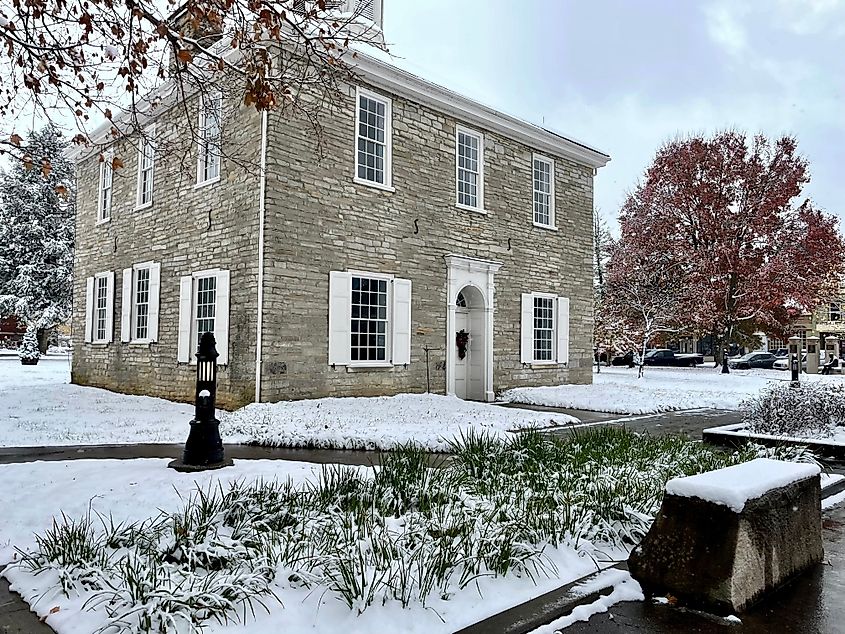
Corydon is one of the most historic places in Indiana due to its history as the first state capital of Indiana. It was first founded in 1808 and would serve as the state capitol from 1816 to 1825 until the legislature moved the capital north to Indianapolis, reflecting the gradual migration northward of new Indiana residents. There are multiple historic buildings to see here in Coyrdon, including the Federal-style Corydon State Historic Site capitol building and the 1817 Governor Hendrick’s Headquarters two-story brick house. The town preserves many artifacts from this time period at the Harrison County Discovery Center. Lastly, visitors can check out the Battle of Corydon Historic Site, the only battle of the Civil War fought in Indiana.
New Albany
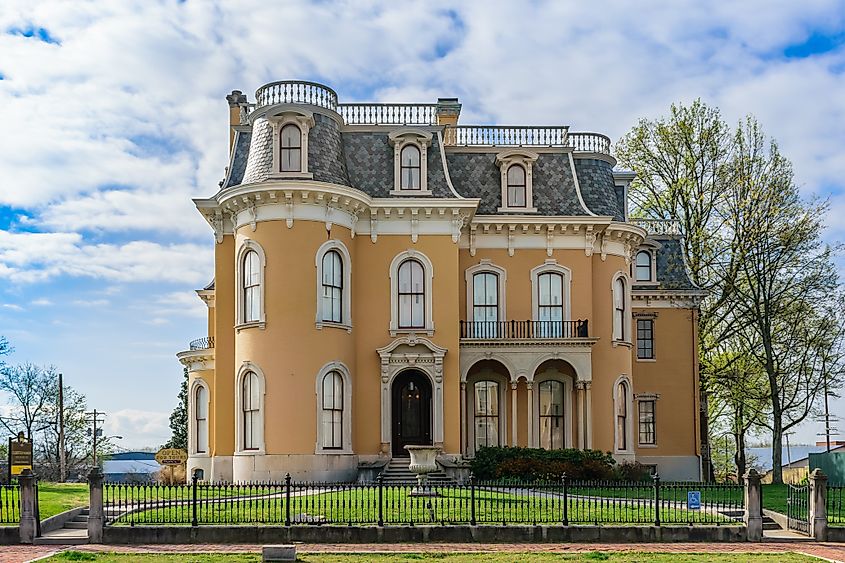
The town of New Albany on the Ohio River is only a few miles away from Clarksville and shares its long history. The Scribner brothers settled the area from 1812 to 1813, and would explode over the years, becoming the largest city in Indiana by 1850. Today, the town’s population sits at a more modest 37,000, but many of the buildings from its heyday are beautifully preserved. These include the Scribner House, built in 1813 to 1814 with ash, oak, and poplar trees in the New England Federal Style that the brothers were familiar with. New Albany also has an illustrious Mansion Row, which includes the Culbertson Mansion, an 1867 Second Empire-style structure with 25 rooms, a frescoed painting ceiling, carved staircases, marble fireplaces, and more. Lastly, visitors can learn about the history of New Albany and see local art at the Carnegie Center for Art & History downtown.
Vincennes

Vincennes is the oldest settlement in Indiana by a wide margin, as it was founded not by Americans but by French traders. Francois Marie Bissot-Sieur de Vincennes would set up a fur trading post here in 1732 to protect this part of New France from the British. The area would pass into British hands after the Seven Years' War and then into American hands under the leadership of George Rogers Clark in 1779. In honor of his achievements, the town set up the George Rogers Clark National Historical Park, the largest memorial monument west of Washington D.C. Vincennes has several of the oldest buildings in Indiana, such as the French House, a French Creole structure built in 1809 by Michael Brouillet and the Capitol Building, a red building that served as the capital of the Northwest Territory from 1805 to 1813 prior to moving to Corydon.
Conclusion
Indiana is not the oldest state by any means, but it does preserve both a rich history of 19th and 18th century settlement as well as the heritage of immigrants who came from Europe seeking a new life, whether for economic reasons or spiritual aspirations. These old-world towns have picturesque labyrinths, incredible 19th century mansions and many local museums where visitors can discover how the original settlers lived and prospered here. These old-world towns are ideal for both Indiana residents and travelers alike to explore.











